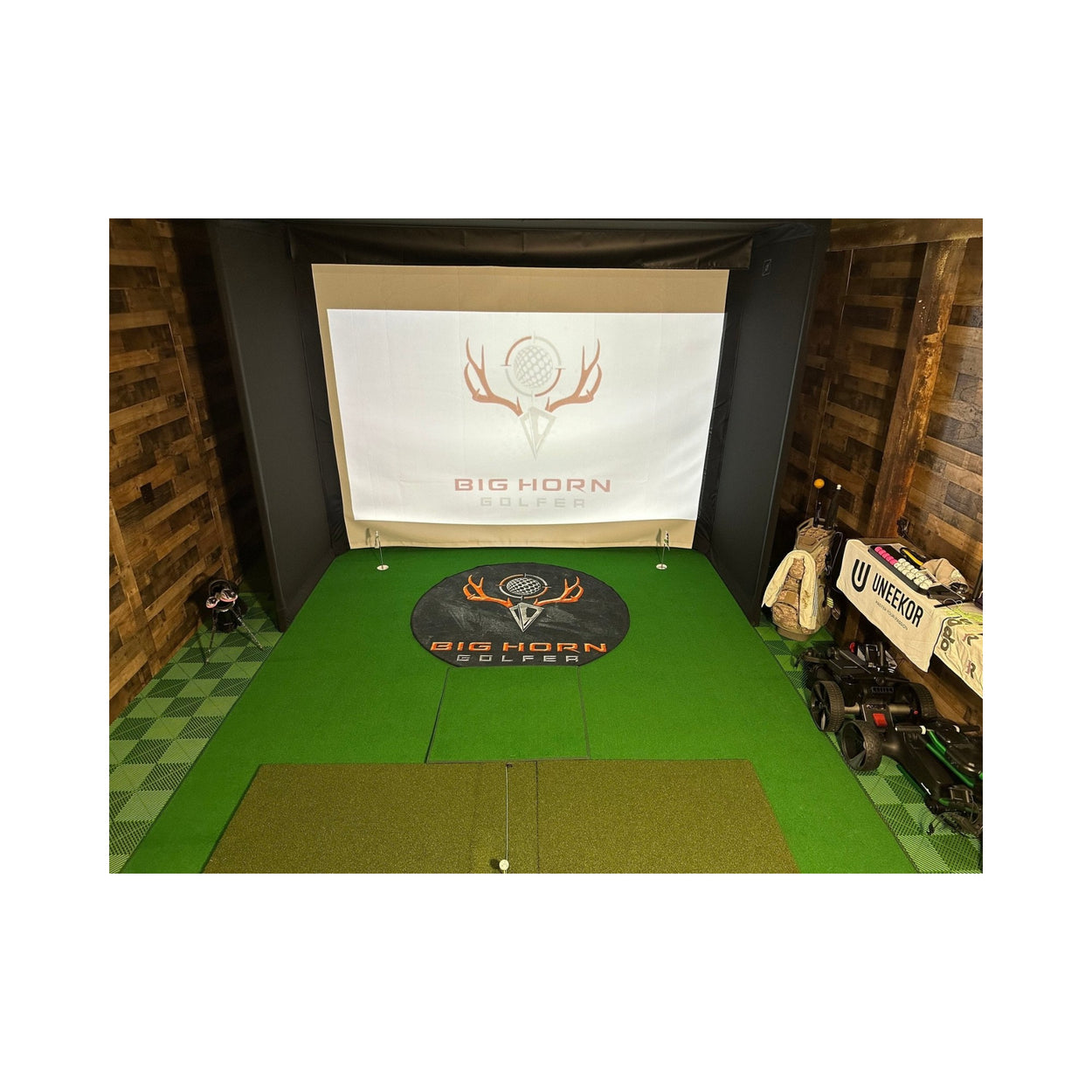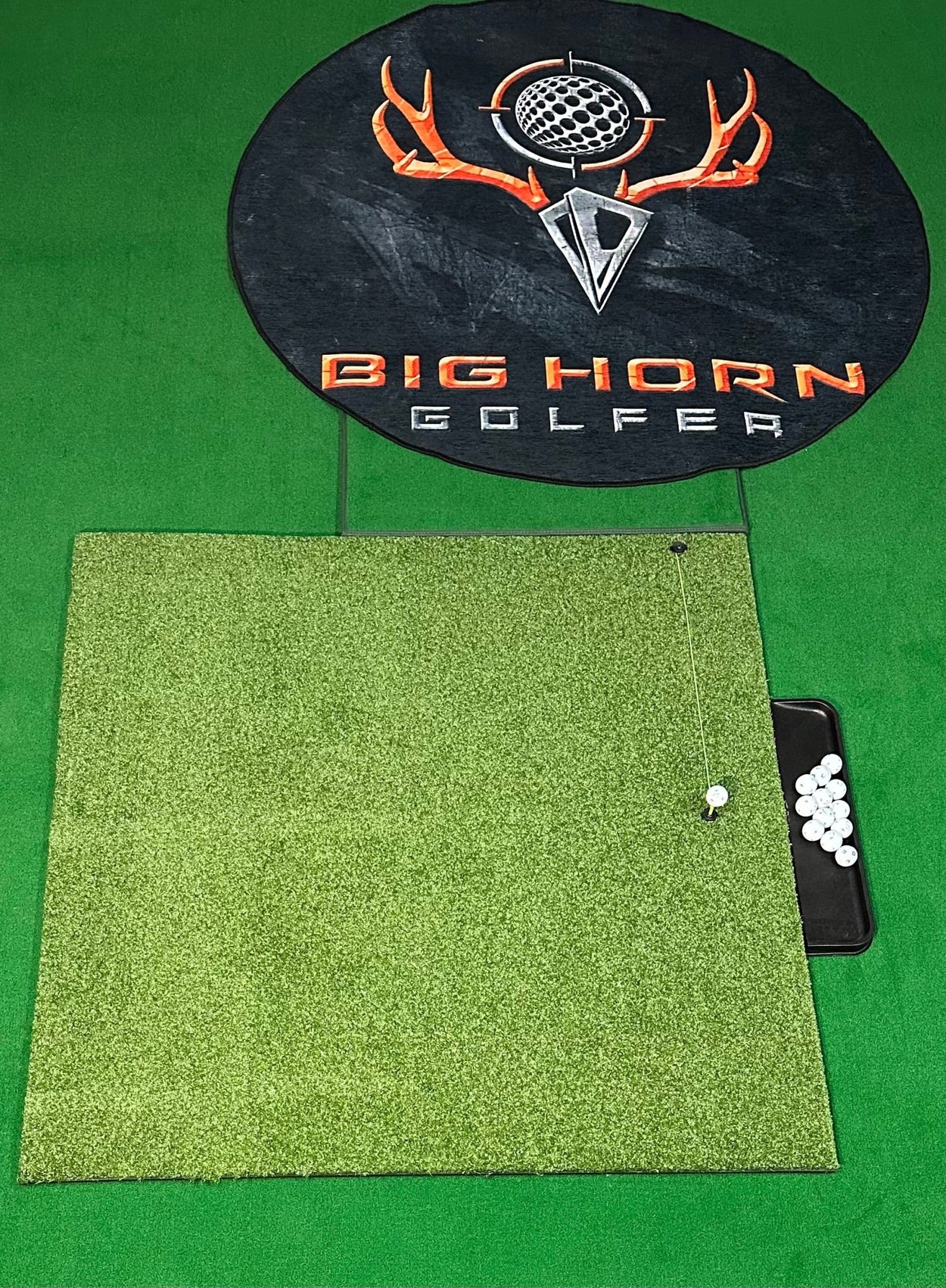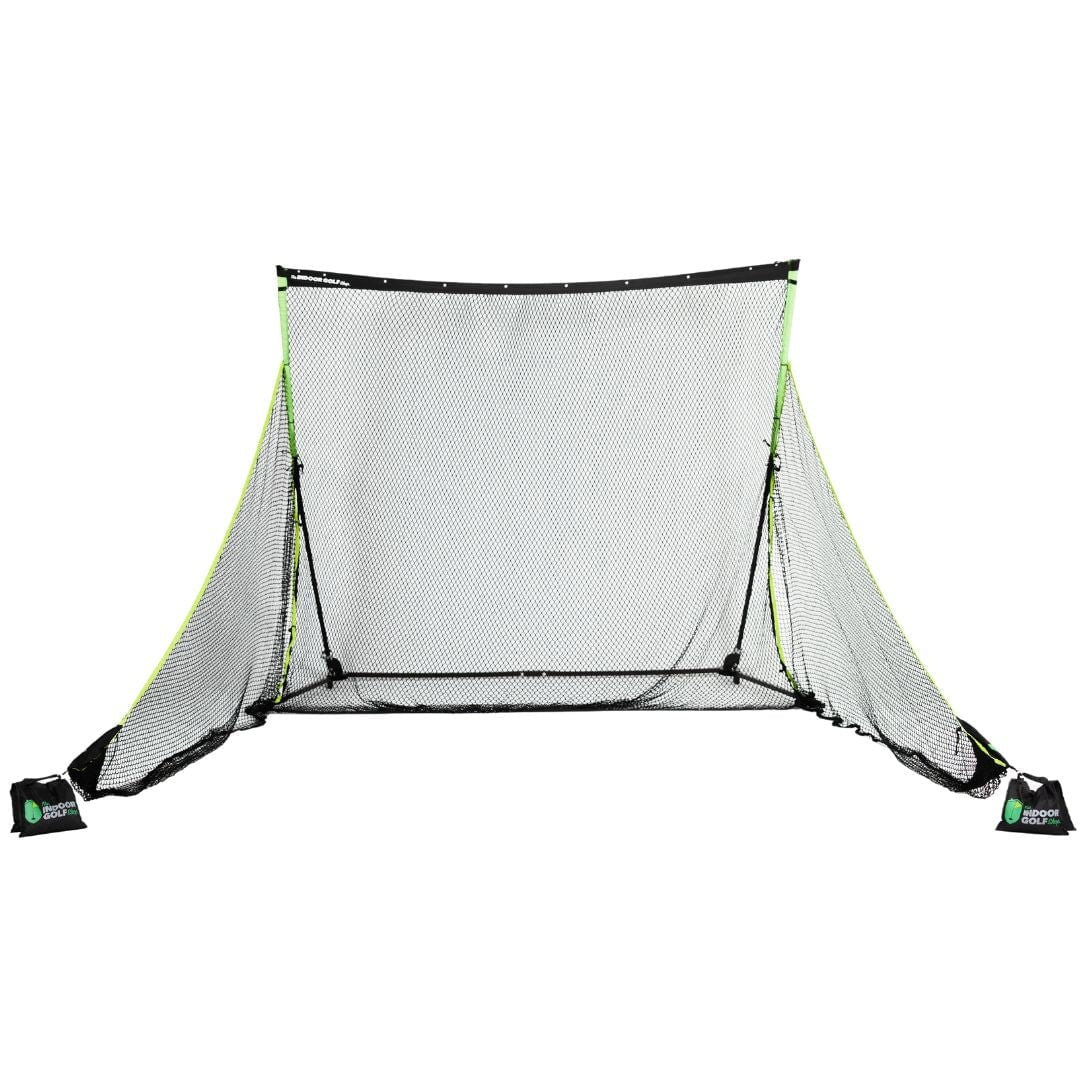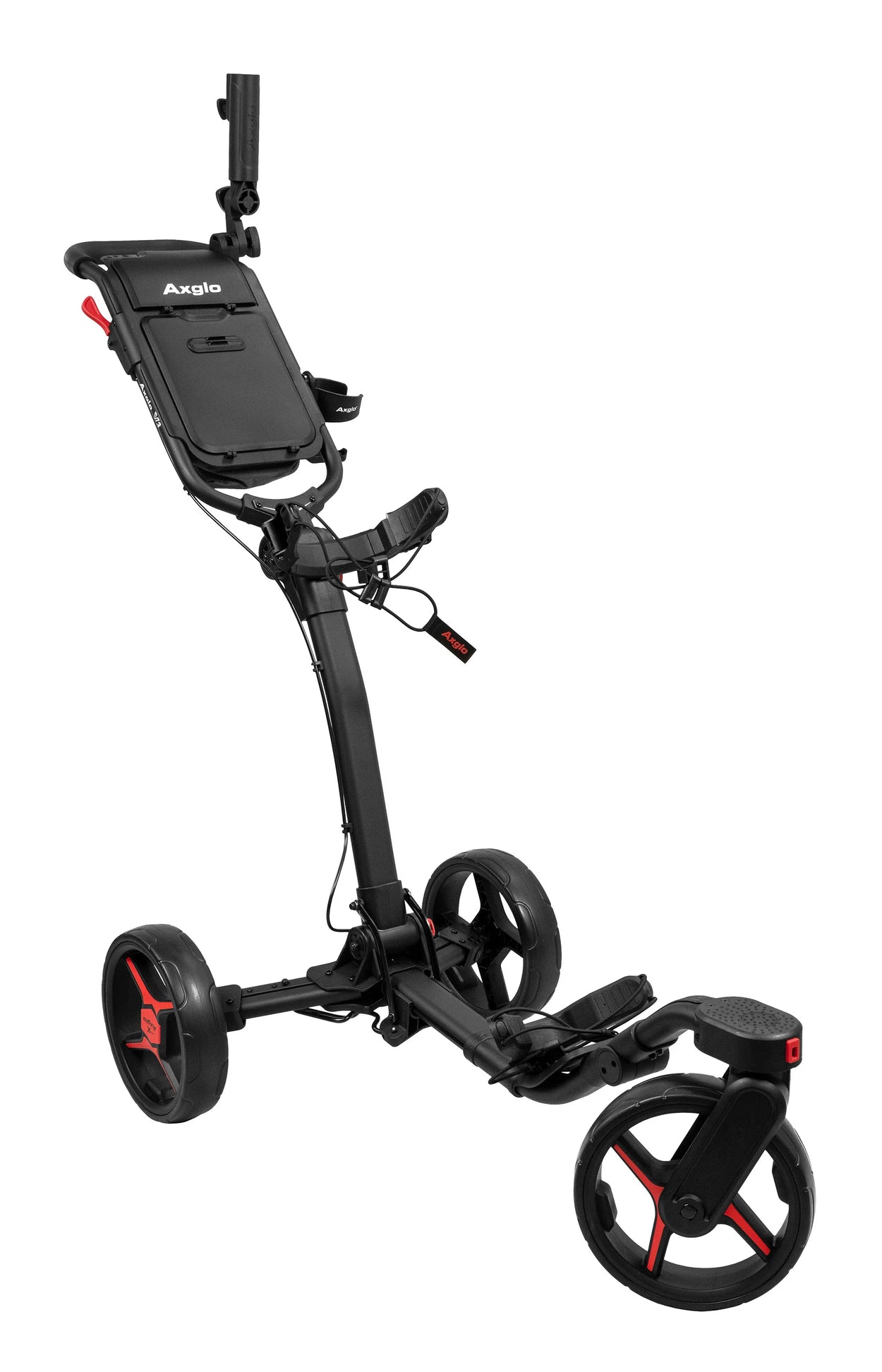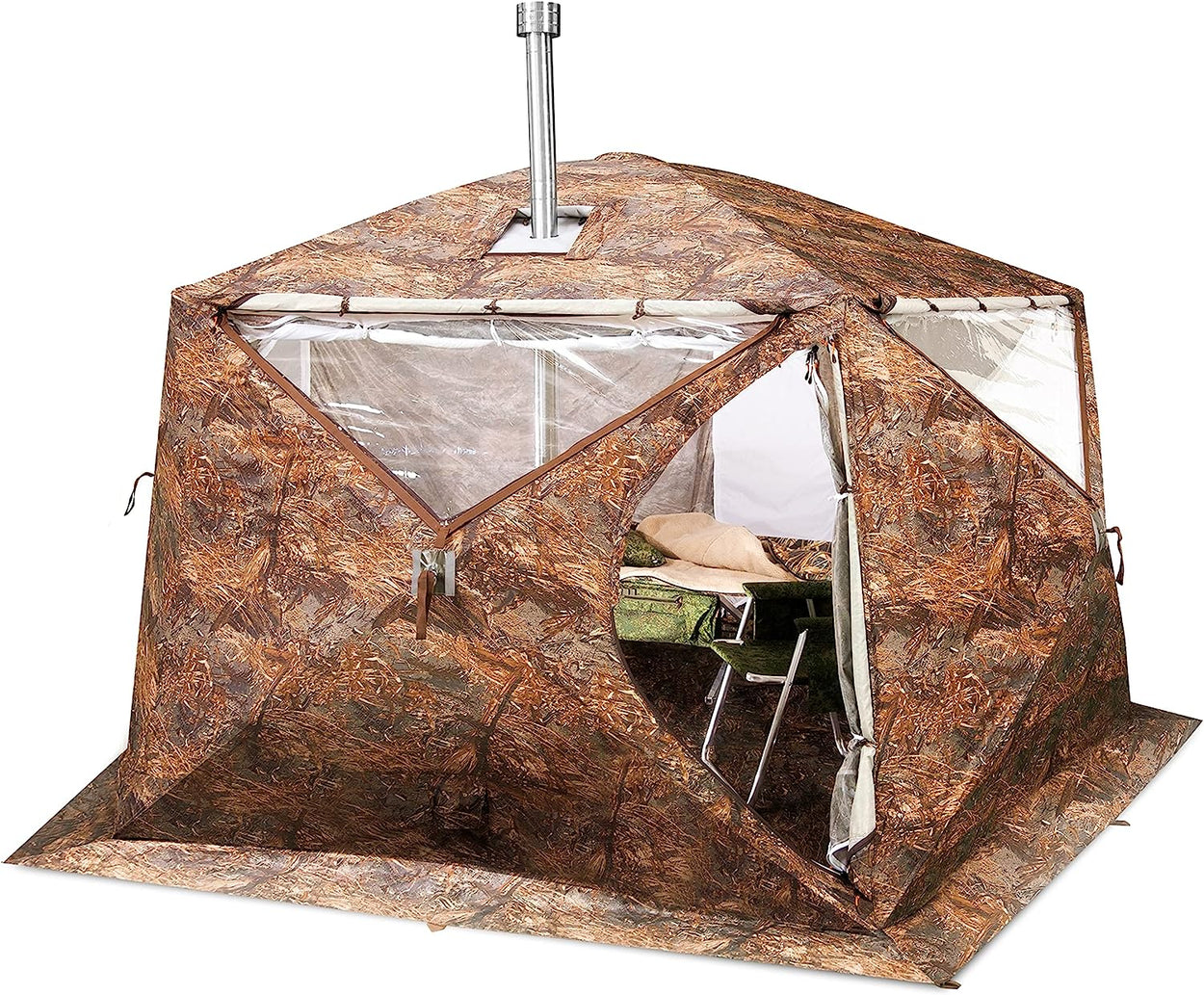ARTICLE
Best Inflatable Tent in 2025 - How to Choose the Right Outdoor Camp Tent
Chris Lang
Read Time: 30 minutes
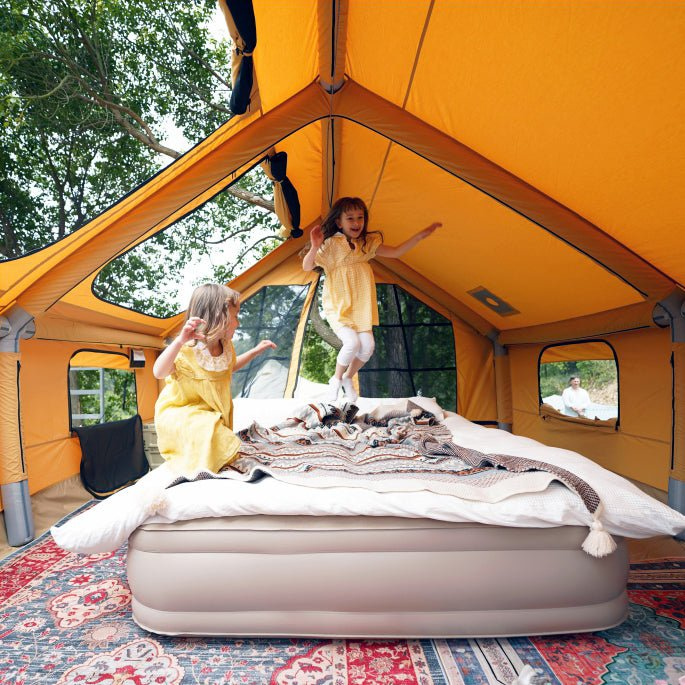
Inflatable tents have transformed the camping experience for outdoor enthusiasts. Gone are the struggles with complicated pole systems and time-consuming setups. Instead, these innovative shelters offer a streamlined approach to creating a comfortable shelter in the wilderness.
In this guide, we'll cover everything you need to know about selecting the perfect inflatable tent for your needs. We'll also examine different types and designs, compare features across price points, highlight the top performers in the market, and provide practical advice on maintenance and care.
Let's get started!
Understanding Inflatable Camping Tents
When you see inflatable tents for the first time, you might wonder how they differ from traditional options. The answer lies in the tent structure itself. Instead of rigid poles, these tents use air-filled beams or tubes to create their framework, offering a unique set of advantages for campers.
Modern inflatable tents often feature advanced air beam technology, with many premium models incorporating separate air chambers. This design ensures that even if one section develops a leak, the entire tent won't collapse. This is a huge plus if you're camping in areas with extreme weather conditions.
The Advantages of Inflatable Tents
The most obvious benefit of inflatable tents is their simplified setup. With a good pump, most models can be fully erected in under 10 minutes, allowing you to enjoy your surroundings more and less struggle with your shelter.
Beyond the convenience factor, inflatable tents often provide exceptional stability in windy conditions. The flexible nature of air beams allows them to bend rather than break under pressure, helping them withstand strong gusts that might damage traditional pole systems.
Space efficiency is another notable advantage. The design of air beams typically creates more usable interior space and better headroom than comparable traditional tents. This improved livability makes a huge difference during extended camping trips or when the weather forces you to spend more time inside.
For those considering an upgrade to their camping setup, inflatable tents offer a compelling combination of convenience, comfort, and durability, giving the best value for money.
Difference Between Inflatable Tents and Traditional Pole Tents
Here are some of the major differences between inflatable and traditional tents:
1. Setup Time and Complexity
Inflatable tents take 5-15 minutes compared to 15-30 minutes for traditional designs.
Beyond speed, the process is more straightforward. It requires less technical knowledge and often just one person can set it up, regardless of size.
2. Weight and Packability Comparison
Inflatable tents tend to be bulkier and heavier due to the built-in air beams and pump requirements. Even though they remove the need for metal or fiberglass poles, the durable materials and air chambers add extra weight.
On the other hand, traditional pole tents are lighter and pack down smaller, especially in models designed for backpacking. This makes them a more practical option for long-distance hikes or when storage space is limited. However, if you're car camping, the extra weight of an inflatable tent isn't usually a deal-breaker, and you get the trade-off of a faster setup.
3. Performance in Extreme Weather
Both designs can perform well in challenging conditions when properly constructed, but they offer different advantages:
- Inflatable tents are more flexible in high winds as they bend rather than break.
- Traditional pole tents shed snow more effectively in winter conditions.
Overall, inflatable designs generally offer better stability in moderate conditions without requiring as much skill in setup and guy line adjustment.
4. Long-Term Value Assessment
While inflatable tents are more expensive, their high-value features justify the cost. This includes:
- Reduced replacement costs (fewer broken poles).
- Time savings on each camping trip.
- Potentially longer lifespan with proper care.
- Higher resale value due to continued demand.
- For frequent campers, these factors often justify the additional upfront investment in an inflatable model.
For campers wanting a fully integrated shelter‑and‑heat solution, explore our Hot Tent collection that combines inflatable structures with built‑in stove jacks and high‑performance fabrics.
Types and Styles of Inflatable Camping
There are five major types of inflatable camping tents:
1. The Bubble Tent
These transparent domes have gained popularity for their unique aesthetic and immersive outdoor experience. Like bubbles, they offer a panoramic view of your surroundings, protecting you from insects and light precipitation.
They're ideal for glamping and special occasions but may not be the most practical choice for rugged backcountry camping.
Love the bubble‑tent vibe? Check out our collection of glamping‑style bell tents from Esker Outdoors for an immersive star‑gazing experience.
2. Tunnel Tents
Tunnel-style inflatable tents prioritize livable space and practicality. Their elongated design creates excellent headroom throughout and efficiently uses floor space.
Typically, these tents have multiple rooms or sections and are well-suited for family camping trips where privacy and organization are priorities.
3. Air Dome Tents
Airdome tents are similar in shape to traditional dome tents but use air beams instead of poles. Due to their aerodynamic profile, they offer excellent wind resistance.
The dome design distributes stress evenly across the structure, making it a reliable choice for camping in exposed areas or during unpredictable weather conditions.
4. Hybrid Designs
Some manufacturers have created innovative hybrid systems that combine inflatable beams with minimal pole usage. These designs aim to maximize stability while maintaining the quick setup advantages of fully inflatable models. They are an excellent middle ground for campers seeking the best of both worlds.
5. Ultralight Backpacking Options
The ultralight tents are designed for campers who are covering long distances on foot. These tents have better weight savings features than traditional backpacking tents, yet are durable and weather resistant.
6. Pop-Up Tents
Pop-up tents are the way forward for those who value speed over everything else. They spring into shape when released from their bag – no fumbling with poles required.
Top Inflatable Camping Tents for 2025
Here are some standout models for 2025 that deserve consideration.
1. RBM Outdoors Inflatable Tent Koala 7 Beige:
The Koala Air Tent 7—Premium Inflatable Outdoor Tent from RBM is an eco-friendly choice for environmentally conscious buyers.
The tent is made from sturdy cotton fabric and features breathable canvas, mosquito net windows, and a stove jack for cold weather for the most comfortable experience.
Note: Our favorite tent‑compatible wood stoves come from Winnerwell, renowned for their efficient burn and ease of installation in canvas shelters.
Another unique aspect of the Kaola air tent is its easy set-up process. All the poles are built in, and all you need to do is pump the air in, and voila! It's ready for use.
The space is equally large, too. The Koala 7 provides generous space for families or groups, comfortably fitting up to seven people. Its spacious interior also allows for standing height throughout most of the tent, making it easy to move around and store gear.
2. RBM Inflatable Tent Panda Large for 2 - 6 People
The RBM Inflatable Tent Panda ranks among the best inflatable tents of 2025 thanks to its high-quality materials, roomy interior, and durable build. This tent is made of 210gsm T/C fabric that's both resistant to mildew and waterproof.
The Panda's simple inflation system ensures a quick setup—just one person can pitch it using a pump in 5 minutes or less.
Inside, the tent offers generous headroom and enough space to comfortably sleep up to six people. The floor plan is also large, and there's plenty of room for beds, camping gear, and even a small stove setup.
If you plan to use a stove jack for chilly nights, pair your tent with one of our certified Hot Tent Stoves for safe, reliable warmth
You'll also get extras such as mosquito netting, ventilation windows, and a durable PVC groundsheet for a comfortable camping experience throughout your stay.
Overall, we love how this tent balances modern convenience and rugged outdoor performance. It's the perfect option for glamping enthusiasts, families, or anyone who wants a stress-free and cozy camping experience.
3. RBM Inflatable Tent Octopus
The RBM Inflatable Tent Octopus is a game-changer for campers seeking space, stability, and innovative design. Crafted with premium 300gsm T/C fabric, the Octopus tent is built to withstand the elements—it's waterproof, breathable, and naturally resistant to mildew and UV damage, making it ideal for all-season camping.
What sets the Octopus apart is its innovative layout. This tent features a large central dome with multiple arms branching out like an octopus.
Each arm can serve as a separate sleeping area or storage section, offering privacy and flexibility. It's an excellent choice for group trips or families with older kids who prefer their own space.
Comfort hasn't been overlooked, either. The tent includes ventilation windows for airflow, mosquito mesh for bug protection, and a stove jack for those chilly nights. Its heavy-duty PVC floor keeps moisture out, while the spacious interior lets you move freely without feeling cramped.
Overall, the RBM Octopus is perfect for larger groups or those wanting extra room to relax. Its clever design, durable materials, and easy setup make it a standout choice for serious campers and glampers alike.
4. RBM Inflatable Tent Panda
The RBM Inflatable Tent Panda Large in Khaki is a durable and stylish choice for campers who value comfort, simplicity, and aesthetic appeal. This tent combines practical functionality with a rugged yet refined look—perfect for glamping, extended camping trips, or off-grid adventures.
Made from 210gsm T/C poly-cotton canvas, the tent offers breathability and weather resistance. It's also naturally mildew-resistant, waterproof, and offers excellent insulation against cold and heat. This makes it a dependable option in a variety of climates.
The khaki tone blends beautifully with natural surroundings, giving your campsite a minimalist, earthy feel.
Inside, the Panda Khaki doesn't compromise on space or comfort. It boasts generous floor space and standing-height ceilings, allowing campers to move around easily. There's also an integrated stove jack for wood-burning stoves, multiple mesh-covered windows for ventilation, and a PVC groundsheet to prevent dampness.
Overall, the RBM Panda Large Khaki perfectly balances strength, style, and simplicity. Whether you're a seasoned camper or new to inflatable tents, it's a versatile and cozy option for a seamless outdoor experience.
How to Choose the Right Inflatable Tent
Choosing an inflatable tent requires consideration of several factors beyond just price. You need to consider your specific camping style, group size, typical weather conditions, and personal preferences. Let's talk about this in detail:
1. Material and Durability:
The quality of the fabric is essential to ensuring a reliable and enjoyable camping trip. Choose a tent with good fabric, and you'll enjoy it for several years. Conversely, a poorly made tent with thin fabric or weak seams can easily tear, leak, or degrade under sun exposure, leaving you vulnerable to the elements.
That said, when evaluating inflatable tents, pay careful attention to both the external material and the construction of the air beams.
For the tent body, look for ripstop fabrics that prevent small tears from expanding. Polyester offers good UV resistance, while nylon tends to be lighter but may degrade faster in sunlight. Canvas options provide excellent durability and insulation but come with a weight penalty.
Denier count (often listed as "D" in specifications) indicates fabric thickness—higher numbers mean thicker, more durable material. Consider tents with at least 150D fabric for the main body and 600D or higher for the floor for frequent use or challenging conditions.
The air beam construction is equally important. Quality models feature multiple layers of protection around the air chambers, including external sleeves that shield them from damage and make them easier to replace if needed.
2. Size:
Size matters—both in terms of how many people the tent can accommodate and how much space you want for comfort and gear storage.
First, think about your group size. If you're camping solo or as a couple, a compact 1–3 person tent might suffice. However, always consider sizing up for comfort. For example, a “4-person tent” is often more comfortable for two people with gear than for four people tightly packed together.
Next, consider internal space and layout. Look at the floor dimensions, headroom, and living space. Some inflatable tents offer multiple rooms or dividers, which can give you privacy if you're camping with family or friends. Standing height is another comfort factor—standing and moving around freely makes a huge difference, especially on longer trips.
Also, don't forget about vestibules and porches. These externally covered areas are great for storing muddy boots and wet gear or setting up a camp kitchen out of the rain.
Lastly, check the packed size of the tent. Even larger inflatable tents should pack down reasonably well, but they'll still be bulkier than ultralight pole tents. Make sure you have space in your vehicle or storage area for transport.
Tip: Always go for a tent rated slightly larger than your group size if you want extra comfort or anticipate bringing pets, children, or lots of camping gear.
2. Weather Resistance for All Conditions:
The expected camping conditions should heavily influence your selection.
Most quality inflatable tents will perform adequately for three-season use in moderate climates. However, if you're planning on camping in challenging weather, pay special attention to these factors:
-
Hydrostatic head ratings measure waterproofing effectiveness. In wet conditions, look for at least 3000mm for the fly sheet and 5000mm for the ground sheet. Higher numbers indicate better water resistance.
-
Ventilation is crucial in preventing condensation, which can make a tent feel damp even when it's not leaking. Look for models with adjustable vents that can be operated inside the tent.
-
For winter camping or high-altitude conditions, consider four-season-rated inflatable tents with stronger air beams, steeper walls to shed snow, and fewer mesh panels to retain heat.
For true all‑weather reliability—snow, wind, or rain—browse our Premium 4‑Season Outfitter Tents by RBM Outdoors built to perform in the harshest conditions.
3. Setup and Inflation Systems:
The inflation mechanism also affects your camping experience. The most common options include:
- Manual pumps (typically included): Economical but require physical effort.
- Electric pumps: These are faster but require power.
- Integrated pump systems: These are convenient but add weight and may be difficult to repair.
Consider how you'll handle deflation and packing as well. Some models feature multiple air-release valves for quicker breakdown, while others require manual compression to remove all air.
4. Weight and Packability:
Campers should consider weight and packed size as they affect transportation and storage. These factors are even more important for backpackers. Although modern inflatable tents have made significant improvements in this area, they're still heavier than traditional pole tents.
Overall, look for models with compression storage bags and consider how the tent will fit in your vehicle or backpack. All the manufacturers in this guide have packed dimensions and weight to help with this assessment.
How to Set Up Your Inflatable Tent
Most inflatable tents can be set up in just 5 to 15 minutes, depending on their size and design. Here’s a simple breakdown of the typical setup process:
Step 1:
Find level ground and clear away sharp objects that could damage the tent floor.
Step 2:
Unroll the tent and position it with the door facing your preferred direction.
Step 3:
Close all air valves except those you'll be inflating through.
Step 4:
Connect your pump to the inflation point and begin adding air.
Step 5:
Secure the corners with stakes once the beams are firm (but not over-inflated).
Step 6:
Adjust guy lines or straps to create proper tension and stabilize the tent.
Step 7:
Add any rainflies or additional components if they are not already attached.
Many manufacturers now include specific pressure guidelines for optimal performance—typically between 7 and 9 PSI. To achieve the right inflation level, use a pump with a pressure gauge.
Common Setup Mistakes to Avoid
Even with their simplified design, several errors can complicate your inflatable tent experience:
- Over-inflation can strain seams and damage air beams.
- Inadequate staking reduces stability and can allow wind to catch and move the tent.
- Setting up on sharp objects can puncture the floor and compromise waterproofing.
- Inflating in direct sunlight on hot days may cause excessive pressure as air expands with heat.
- Not following the manufacturer's sequence. Some tents require a specific order of inflation for proper setup.
Tools and Equipment Needed
While inflatable tents require fewer accessories than traditional models, having the right equipment is still important:
- The pump (manual or electric) is compatible with your tent's valves.
- A mallet or stake hammer secures tent stakes on firm ground.
- Repair kit with patches and adhesive (usually included with purchase).
- Groundsheet or footprint (often sold separately) to protect the tent floor.
- Pressure gauge if not built into your pump.
Additional Features For Your Camping Experience
The right accessories add comfort, convenience, and functionality to your outdoor shelter. Here's how:
1. Extendable Porches and Awnings
An extendable porch or awning is an excellent addition for those who love outdoor living. It provides extra space for relaxing during the day without being cooped up inside the tent. Plus, it offers protection against sun and rain.
Consider tents with built-in porches; these provide added convenience as there's no need for a separate setup.
2. Solar Power Packs
If going off-grid doesn't mean giving up electricity entirely, solar power packs are worth considering. These portable devices harness sunlight and convert it into usable power—perfect if you like having lights in your tent or charging electronic gadgets while camping.
3. Tent Footprints
A tent footprint is a groundsheet specifically designed to fit your tent model, providing an extra layer of protection against abrasion from rough or uneven ground. This small addition can increase the lifespan of your inflatable camping gear.
4. Inflatable Tent Heaters
If you're camping in cooler weather, invest in an inflatable tent-compatible heater. But remember, safety is paramount; always ensure proper ventilation and that the heater isn't in direct contact with any part of the tent.
5. Internal Dividers
Many inflatable tents come with removable internal dividers that let you customize your space as per your needs. With this, you can create separate sleeping quarters or designate a storage area for equipment.
6. Integrated Lighting Systems
Modern inflatable tents offer built-in lighting channels or attachment points specifically designed for LED strip lighting. These systems provide ambient illumination without the harshness of handheld lanterns, creating a more comfortable evening environment.
7. Climate Control Options
For camping in challenging weather conditions, consider these specialized additions:
- Thermal reflective layers that can be attached to your tent's ceiling to retain heat in cold weather.
- Battery-powered fans with tent mounting brackets for hot weather camping.
- Ventilation extenders that improve airflow while maintaining weather protection.
8. Flooring Enhancements
The standard groundsheet included with most inflatable tents provides basic protection, but additional options can increase comfort:
- Interlocking foam floor tiles that provide insulation and cushioning.
- Waterproof carpets sized specifically for popular tent models.
- Elevated flooring systems for camping in very wet conditions.
How to Maintain Your Inflatable Tent
First, ensure the tent is dry before you pack it away. Dampness can lead to mildew, which may cause unpleasant odors and gradually deteriorate the fabric of your gear. Think of it as leaving wet golf clubs in your bag – they will rust.
Also, remember that extreme temperatures are unfriendly to inflatable tents. If possible, try storing them at room temperature, just like you'd store premium hunting gear.
Other tips are:
i. Run Routine Maintenance Checks
Routine maintenance checks are another way to keep your tent strong through countless camping trips. Inspect all seams and zippers regularly—these areas tend to bear the brunt of wear and tear, much like the wheels on an electric golf scooter endure constant friction.
ii. Fix Leaks
A small puncture or leak might seem insignificant now but could become a significant problem later if left unchecked—sort of like missing an easy putt because we thought it was a gimme. A quick patch-up job should help prevent any minor issues from turning into major ones down the line.
iii. Always Keep the Tent Anchored When in Use
Stability matters, too, when trying to achieve longevity with inflatable tents. An unstable tent is more likely to sustain damage from strong winds or heavy rains, much like an unsteady swing could lead to a poor shot on the golf course.
Make sure your tent is well anchored and always pitched on flat ground. This simple act can greatly extend its life expectancy.
iv. Promptly Address All Issues
Don't delay when addressing tent repairs; take care of them promptly to avoid major damage. A small tear today could become a large rip tomorrow, ruining your camping experience as surely as missing that birdie putt on the 18th hole.
Clean the Tent Regularly
Proper cleaning techniques preserve both appearance and functionality:
- Brush off loose dirt before packing up camp.
- Set up the tent at home and clean it with mild soap and lukewarm water.
- Avoid harsh chemicals or detergents that can damage waterproof coatings.
- Pay special attention to zippers, clearing any sand or dirt that could cause jams.
- Be sure to let the tent dry thoroughly before storing it, even if it seems dry on the surface.
Maintain the Air Beam
The air beams require specific care beyond general tent maintenance:
- Check valve seals regularly for signs of wear or debris.
- Store the partially inflated ball if possible to prevent the creasing of the beam material.
- Protect beams from sharp objects, including during transportation.
- Follow manufacturer recommendations for periodic pressure checks during extended camping trips.
Conclusion
Choosing the right inflatable tent for your 2025 outdoor adventures means taking into account your personal needs, preferred camping style, and available budget. To help guide your decision, we've explored the various types, key features, top brands, and essential maintenance practices.
Remember that the "best" inflatable tent isn't necessarily the most expensive or feature-rich but the one that aligns most closely with your particular requirements. Consider how and where you'll be using it, how many people will typically share the space, and what weather conditions you're likely to encounter.
Ready to purchase your inflatable tent? Check out our top picks here. Or, you can schedule a 1-to-1 call with Nick, our founder, for a personalized recommendation.
What are the key features to look for in the best inflatable tent?
Some key features to consider when looking for the best inflatable tent include its durability, weather resistance, ease of setup, spaciousness, and overall design tailored to your camping needs.
How do I choose the best inflatable tent for 4-season camping?
When choosing an inflatable tent for 4-season camping, look for one with strong, weather-resistant materials, good insulation, and a design that can withstand harsh winds and heavy snow loads. Also, ensure it has proper ventilation for warmer seasons.
What are the benefits of using an inflatable tent for winter camping?
Inflatable tents for winter camping offer excellent insulation and are often more stable in cold, windy conditions. They can also be easier to set up in cold weather compared to traditional tents with poles.
Why are inflatable tents an excellent option for family camping?
Inflatable tents are an excellent option for family camping due to their spaciousness, quick setup, and often customizable interior layouts. They provide comfortable and convenient shelter for families while they enjoy the outdoors.
What are the advantages of an automatic inflatable tent for camping?
Automatic inflatable tents are convenient because they can be set up quickly with minimal effort, making them ideal for hassle-free camping trips. They are often packed with features that enhance campers' ease of use.
How important is the ease of setup when choosing the best inflatable tent?
The ease of setup is crucial when choosing the best inflatable tent, as it directly impacts the overall camping experience. Look for tents with features like air beams and pumps that facilitate quick and effortless assembly.
Why is an inflatable tent with a stove jack an excellent choice for winter camping?
An inflatable tent with a stove jack is an excellent choice for winter camping. It allows for the safe and efficient use of a camping stove or heater inside the tent, providing warmth and comfort in cold weather while maintaining proper ventilation.
What's the difference between air beam and air pole technology?
Air beam technology typically uses larger diameter tubes with higher pressure, providing robust structural support. Air pole systems use smaller diameter tubes that mimic traditional tent poles more closely. Air beams generally offer more stability but with a weight penalty, while air poles provide a lighter solution that may sacrifice some strength.
How long can I expect a quality inflatable tent to last?
Proper care and maintenance ensure that a high-quality inflatable tent lasts 5-8 years of regular use. Premium models with better materials and construction may extend this to 10+ years. The air beams typically last the tent's lifetime if properly maintained and protected from punctures.
Are inflatable tents worth the higher price compared to traditional tents?
For many campers, the convenience, ease of setup, and comfort advantages justify the higher initial investment. Frequent campers will particularly benefit from the time savings and reduced frustration. However, occasional campers on a tight budget may find that traditional tents provide better value for their needs.
Frequently Asked Questions
Articles
More Articles
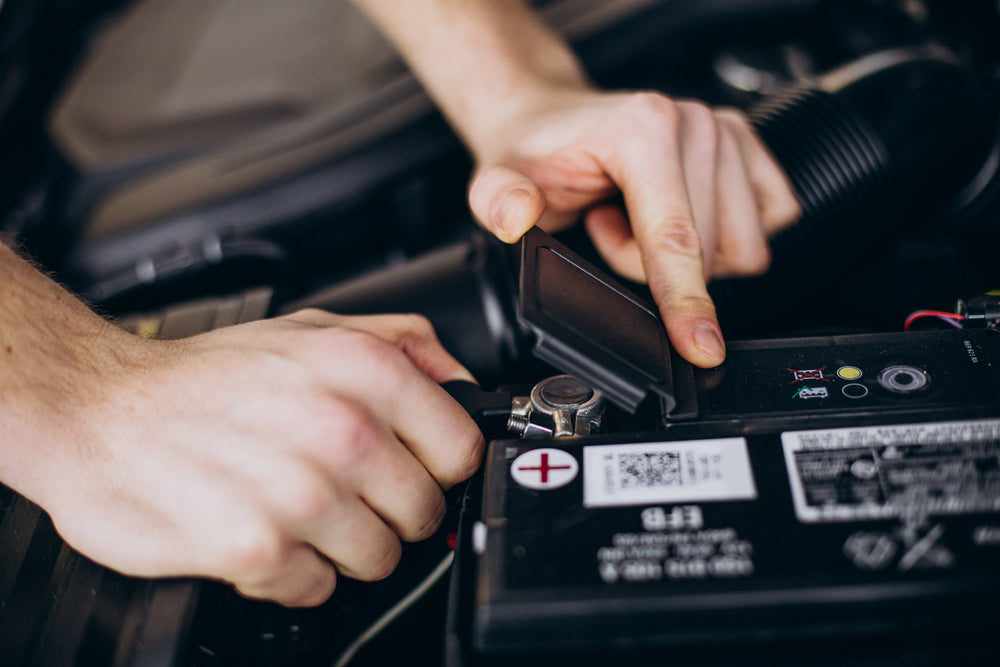
How to Choose the Best Golf Cart Batteries in 2025: The Ultimate Guide




